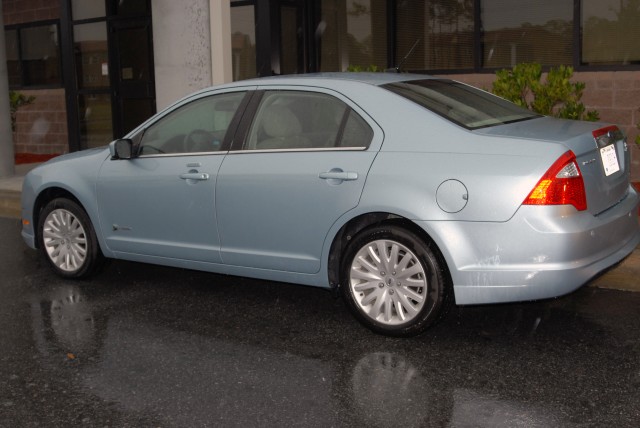FORT STEWART, Ga.</B> -- They look just like any other car or pickup, but because they're hybrid-electric vehicles, they save drivers a lot of money in fuel costs, and they reduce air pollution for everyone.
About six months ago, the Army began leasing these fuel-efficient HEVs from the General Service Administration, the federal agency that purchases non-tactical vehicles for the federal government. Nearly 500 HEVs have already been delivered to Army installations. Seventeen HEVs are now part of Fort Stewart-Hunter Army Airfield's general dispatch fleet or maintenance vehicles.
"We told GSA we'd take as many hybrids as they can give us," said John Brinton, Transportation Motor Pool fleet manager with the Directorate of Logistics. "We currently have six Ford Fusions and 11 Chevrolet Silverado's, all hybrid-electric vehicles. We hope to get another 10 or 20 next year, probably in the spring."
A hybrid-electric vehicle combines a conventional fossil fuel propulsion system with a re-chargeable energy storage system, making a more fuel-efficient vehicle than the gas-only vehicle. When the vehicle's gas engine is running, it keeps the storage battery charged.
One feature most responsible for saving gas takes over when the vehicle comes to a complete stop, as frequently happens in urban driving.
The gas engine shuts off, rather than waste gas while idling. The vehicle is technically still running, however, by way of the electric power source, which will continue until you accelerate from the stopped position and begin moving again. Harry Sikes, DOL maintenance, said the HEV will continue to idle "silently" like this as long as the vehicle is not moving. The lack of noise from a running engine is hard to get used, Sikes said. But if you have to stop to wait on a train, road construction delays or just rush hour traffic jams, you're not wasting gas.
Nonetheless, if the vehicle is left in this "electric" idling position too long or too often, the storage battery could get low. Brinson said the vehicle will "sense" this and start up the gas engine in order to re-charge the storage battery.
Brinson explained that the Energy Independence and Security Act of 2007, also called the CLEAN Energy Act, requires the Army to reduce its annual petroleum consumption by 2 percent through 2015 and reduce petroleum use by 20 percent while increasing alternative fuel use by 10 percent. He said compliance with the goals of Executive Order 13423, which reinforced the congressional legislation, was slow at first.
Most of the Army's general fleet vehicles could not use ethanol in 2007 and hybrid-electric vehicles were not yet practical due to high purchase costs.
Some still argue about the so-called "hybrid premium," which refers to the much higher initial cost for HEVs over conventional, gas-only vehicles. If the dollar amount alone is all that's considered, it is simple math to determine if the additional costs for the HEV is recovered by cost savings for fuel over a certain period of years.
Brinson said each car taken into the Army's general dispatch fleet is replaced every three years or 36,000 miles. Trucks and light vans are replaced every six years or 72,000 miles. He was not aware of any studies showing whether hybrid premium costs were recouped by saved fuel costs during this 3 to 6-year time period.
However, dollars alone are not the only issue when it comes to HEVs. There is a reduction of air polluting emissions directly associated with lower fossil fuel consumption, which contributes to the overall health of the Army community where the HEVs are used.
Brinson noted pollution reduction in urban environments may be particularly important to the Army, which he believes explains why GSA provides more HEVs for Army installations in the Atlanta area than here in coastal Georgia.
The Army has a long-range goal of fielding hybrid-electric manned ground vehicles and tactical vehicles that use bio-diesel fuels, according to the Army Energy Security Fact Sheet: 2008 Programmatic Progress.
In the meantime, Brinson said Stewart-Hunter's general dispatch fleet will consist of an ever-increasing number of HEVs. The Army will continue to lead the way with fuel-efficient technology, he said.




Social Sharing